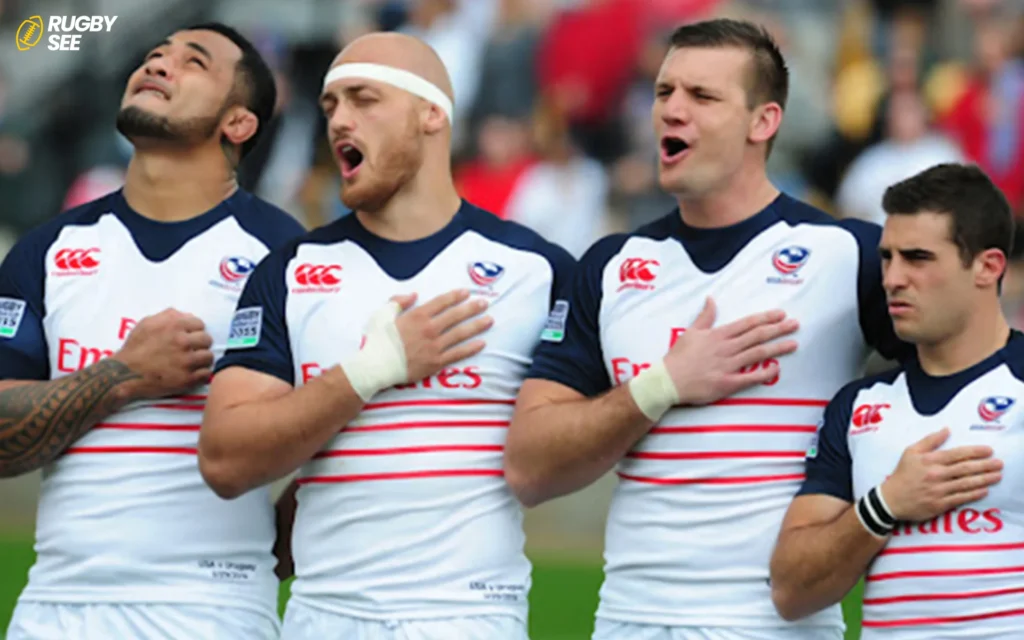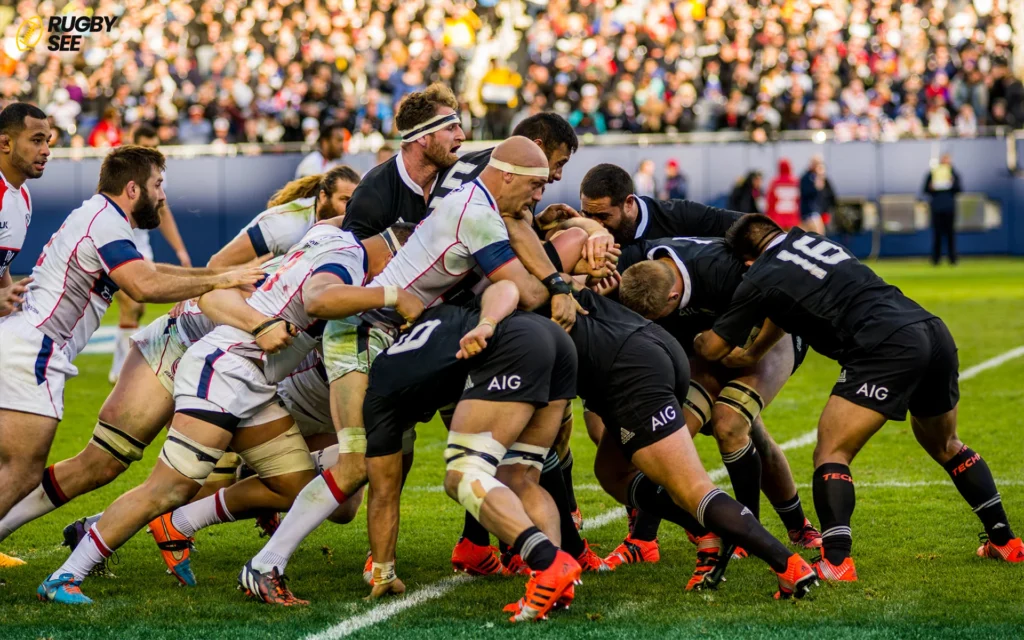At first glance, it might seem unusual to see male rugby players wearing what appears to be a sports bra during training or matches. However, these garments are not traditional sports bras but are high-tech sports monitoring vests. These vests play a crucial role in the modern sports training regime, providing valuable data to coaches and sports scientists. This article will explore the reasons behind this practice, the technology involved, and how it benefits the game of rugby.
Understanding the Sports Monitoring Vest
The garments that many people mistake for sports bras are actually advanced sports monitoring vests designed to hold GPS and other sensors close to the athletes’ bodies. These vests are an integral part of contemporary sports equipment, utilized across various high-intensity sports, not just rugby. The primary purpose of these vests is to track and collect detailed physiological and biomechanical data from players during training sessions and games.
The Technology Behind the Vest
The core technology in these vests is the GPS unit, which tracks the player’s position, speed, and distance covered. However, these devices also measure other critical data points, including heart rate, acceleration, and deceleration rates, and even collision force. This information is invaluable for coaches and medical teams to assess players’ performance, fitness levels, and overall workload during the game.
GPS Tracking
GPS tracking technology provides insights into the positional play and movement patterns of players. By analyzing this data, coaches can make tactical decisions, optimize team formations, and tailor training programs to individual players’ needs.
Biometric Monitoring
Heart rate monitors and other biometric sensors embedded in the vest collect data on the players’ physiological responses to physical exertion. This information helps in managing players’ fitness and endurance levels, crucial for late-game performance and overall health.

Injury Prevention and Management
The vests’ ability to measure impact and collision intensity is particularly important in a contact sport like rugby. This data helps in identifying when a player might be at a higher risk of injury, whether from a single intense collision or cumulative impacts over the game and if you want to know about best Rugby player in Italy read Who is the best Italian rugby player?
Benefits in Training and Matches
The use of sports monitoring vests in rugby training sessions and matches provides numerous benefits, from improving individual player performance to strategic team planning.
Tailored Fitness Programs
With detailed data on each player’s physical output, conditioning coaches can create personalized training programs that address specific needs, enhance strengths, and mitigate weaknesses. This customization helps in maximizing each player’s potential and maintaining optimal fitness levels throughout the season.
Game Strategy Development
By analyzing the movement and effort levels of players during actual games, coaches can develop more effective game strategies. Understanding where players expend the most energy and how they move around the field allows for tactical adjustments that can be the key to winning matches.
Player Health and Longevity
Maintaining player health is paramount in rugby, given the physical demands of the sport. Monitoring vests provide crucial data that helps manage players’ workloads, prevent overtraining, and reduce the risk of injuries, thus extending their careers.

Future Trends in Sports Technology
As technology advances, the capabilities of these sports monitoring systems are expected to grow. Future developments may include more advanced sensors that can track muscle fatigue, hydration levels, and even psychological stress. Such advancements will continue to revolutionize the way sports teams train and compete.
In conclusion, the “sports bras” seen worn by male rugby players are essential tools in the modern athletic training arsenal. They provide a wealth of data
that enhances player performance, informs coaching strategies, and aids in injury prevention. As sports science continues to evolve, the integration of such technology in rugby and other sports will likely become even more prevalent, further transforming how teams prepare for and play the game.
These vests represent more than just a technological advancement; they symbolize the intersection of sports, science, and data analysis, driving the professional sport of rugby into the future. By leveraging detailed, real-time data, teams can not only enhance their on-field strategies but also foster safer playing conditions and more effective training methods. The role of sports monitoring vests in rugby highlights a broader trend towards data-driven decision making in sports, reflecting how critical scientific tools have become in achieving competitive excellence and ensuring athlete welfare.
Broader Implications for Rugby and Other Sports
The adoption of sports monitoring technology in rugby is indicative of broader trends in sports management and athletic performance optimization. This technology is increasingly seen in various sports, including football, basketball, and athletics, indicating a shift towards more scientifically informed sports practices worldwide.
Challenges and Considerations
While the benefits are clear, the use of sports monitoring technology also brings challenges and ethical considerations. Issues such as data privacy, the potential for over-reliance on technology, and the equitable access to advanced tools are ongoing discussions within the sports community. Teams and governing bodies must navigate these concerns thoughtfully to ensure that technology enhances the sport without undermining the spirit of competition or the privacy of athletes.
Engaging Fans and Stakeholders
Interestingly, this technology does not only benefit players and coaches but can also engage fans more deeply. Some teams and leagues are beginning to share certain data points with fans, providing a new layer of insight and engagement that enriches the spectator experience. This approach can deepen fans’ understanding of the game and increase their engagement with their favorite teams and players.

Advanced Analytical Capabilities
As the technology embedded in sports monitoring vests improves, the analytical capabilities they provide will become even more sophisticated. Future developments might include integration with artificial intelligence and machine learning algorithms, which could analyze the vast amounts of data collected to predict potential injuries or suggest optimal training loads for individual players. This kind of predictive analysis could revolutionize how teams approach everything from daily training sessions to long-term player development strategies.
Integration with Other Technologies
Looking ahead, the sports monitoring vests could be integrated with other emerging technologies such as augmented reality (AR) and virtual reality (VR). These integrations could provide immersive training experiences, allowing players to simulate game scenarios and practice responses in a controlled virtual environment. Such tools could enhance tactical training and mental preparation, giving players a significant advantage before they even step onto the field.
Personalized Player Development
The detailed data collected from sports monitoring vests allows for highly personalized player development programs. By understanding the specific physiological and biomechanical characteristics of each player, coaches can tailor training and recovery programs to suit individual needs, maximizing performance while minimizing the risk of injury. This personalized approach can also extend to nutrition and mental health, providing a holistic approach to athlete development.
Ethical and Regulatory Considerations
As the use of this technology becomes more advanced and widespread, the rugby community must address several ethical and regulatory considerations. Issues such as data security, privacy rights, and the potential for misuse of data are paramount. Ensuring that all stakeholders, especially the players, understand how their data is being used and have control over it is essential for maintaining trust and integrity within the sport.
Fan Engagement and Accessibility
The potential for increased fan engagement through the sharing of certain data points has already been touched upon, but this could go even further. Imagine a future where fans could access real-time data on player performance during a game via apps or during broadcasts. This could include heart rate, distance covered, or impact data, adding a new dimension to how fans experience the sport and if you want to know about getting Fit in Rugby read Does rugby make you fit ?
Moreover, as more amateur clubs and schools begin to adopt more basic versions of this technology, it could democratize high-level training insights, making them accessible to a broader range of players and teams. This could help to elevate the overall level of play and understanding of the game at all levels, not just among professionals.
Global Influence and the Spread of Technology
As other countries and sports organizations observe the benefits that advanced sports monitoring technology brings to rugby in countries like Argentina, its adoption is likely to spread. This global influence could standardize how sports are played and coached across the world, leading to an increase in international collaborations and competitions.
Conclusion
The use of sports monitoring vests in rugby is a prime example of how modern technology is not just enhancing the sport but revolutionizing it. From improving player performance and safety to engaging fans in new and exciting ways, this technology holds the potential to transform not just rugby but the sports industry at large. As we look to the future, it is clear that the integration of science and technology will continue to play a crucial role in shaping the evolution of rugby, making it safer, more strategic, and more exciting for everyone involved.
In conclusion, the practice of wearing sports monitoring vests in rugby exemplifies how modern technology is integrated into traditional sports to enhance performance, prevent injuries, and provide strategic insights. These vests, often mistaken for sports bras, are crucial in collecting detailed data that informs a wide range of decisions in professional rugby. As technology continues to evolve, its role in sports is set to become more influential, shaping how games are played, coached, and even watched. The future of rugby, with the integration of such advanced technologies, looks not only more competitive but also smarter and more scientifically grounded, promising a new era for this beloved sport.










